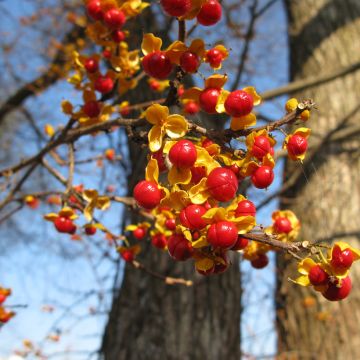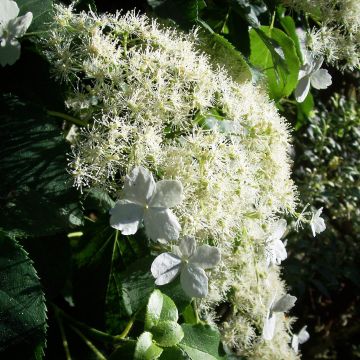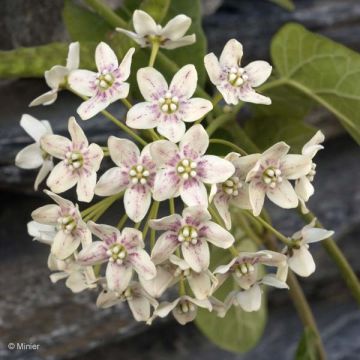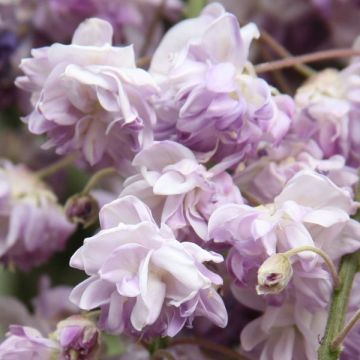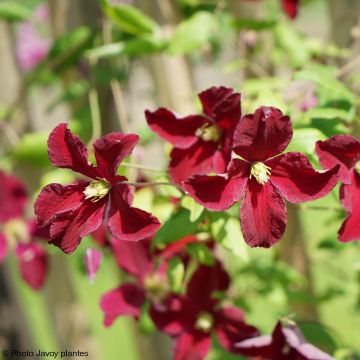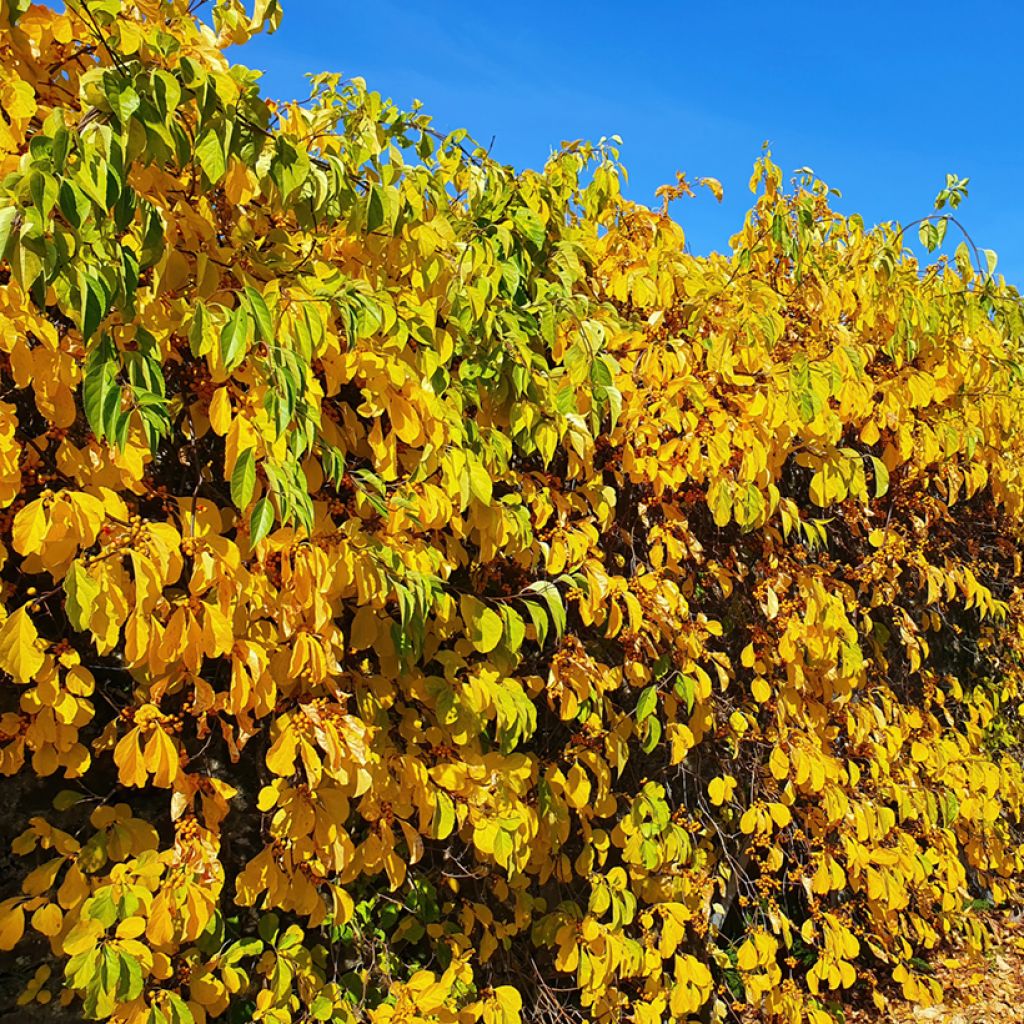

Celastrus orbiculatus Hercules - Célastre ou Bourreau des arbres (mâle)
Celastrus orbiculatus Hercules
Celastrus orbiculatus Hercules
Oriental Bittersweet, Staff Vine
This item cannot be shipped to the selected country
Delivery charge from 5,90 €
More information
Shipping country:
-
Andorra
-
Austria
-
Belgium
-
Bulgaria
-
Canada
-
Chile
-
Croatia
-
Cyprus
-
Czechia
-
Denmark
-
Estonia
-
Finland
-
France
-
Germany
-
Greece
-
Hungary
-
Iceland
-
Ireland
-
Italy
-
Latvia
-
Lithuania
-
Luxembourg
-
Malta
-
Monaco
-
Netherlands
-
Poland
-
Portugal
-
Romania
-
Slovakia
-
Slovenia
-
Spain
-
Sweden
-
Switzerland
-
United Kingdom
Schedule delivery date,
and select date in basket
This plant carries a 6 months recovery warranty
More information
We guarantee the quality of our plants for a full growing cycle, and will replace at our expense any plant that fails to recover under normal climatic and planting conditions.
From 5,90 € for pickup delivery and 6,90 € for home delivery
Express home delivery from 8,90 €.
Would this plant suit my garden?
Set up your Plantfit profile →
Description
Celastrus orbiculatus Hercules is a hardy climbing bush, a luxuriant plant whose autumn foliage, a beautiful light yellow, is an adornment for the garden. It is a very beautiful male variety that pollinates female varieties such as Diana, for example.
The Celastrus orbiculatus Hercules belongs to the family of spindles. Celastrus orbiculatus Hercules, called bittersweet, is native to China, eastern Siberia, Japan, and Korea. It is a very vigorous woody plant with rapid growth that can climb up to 12m (39ft) in height. In nature, it twines around trees, often inhibiting their development. The Oriental Bittersweet is usually dioecious, with male and female individuals. Only the female individuals bear fruit, in the presence of a male plant. The plant develops strong vines that can measure up to 10cm (4in) in diameter, initially reddish-brown in colour. With time, a greyish bark forms. The foliage consists of simple, alternate, ovate-shaped leaves with dentate margins, measuring 8 to 10cm (3 to 4in) long. In the Hercules variety, they are a fairly light green, but turn yellow before falling in autumn. Flowering occurs from May-June to July depending on the climate. It takes the form of small clusters arising from the axils of the leaves or from the terminal part of the branches. These are discreet small green to yellow-green flowers. The roots of the bittersweet are shallow but extensive.
Celastrus orbiculatus Hercules is perfect for decorating a pergola, a large fence, a pylon, a trellis, or a large building. If you want to associate it with a tree, choose an older and larger specimen that can withstand its competition. Very resistant to cold, this shrub is undemanding in terms of soil, but it needs some moisture to thrive. Its foliage adds a beautiful touch to any decor and a delightful charm to the late season. In a large exotic garden, it can accompany the magnificent vegetation of Aristolochia siphon. In moist soil, it can climb Nyssa sylvatica , for example, the combination of their autumn colours will be magnificent. Its association with a vigorous Virginia creeper such as Parthenocissus quinquefolia is also sumptuous!
Report an error about the product description
Celastrus orbiculatus Hercules in pictures
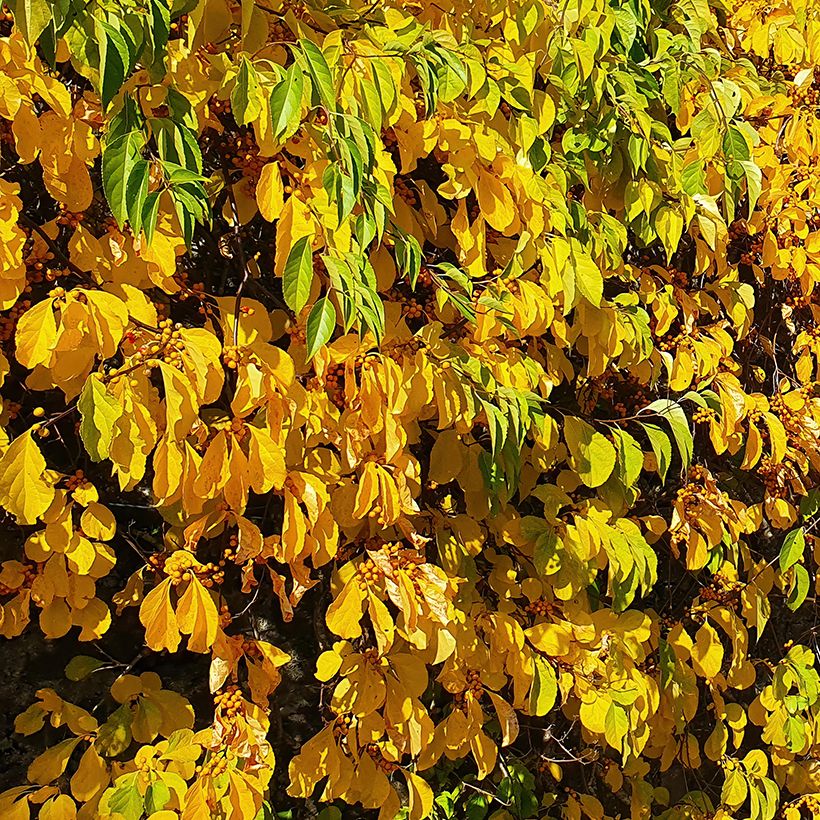

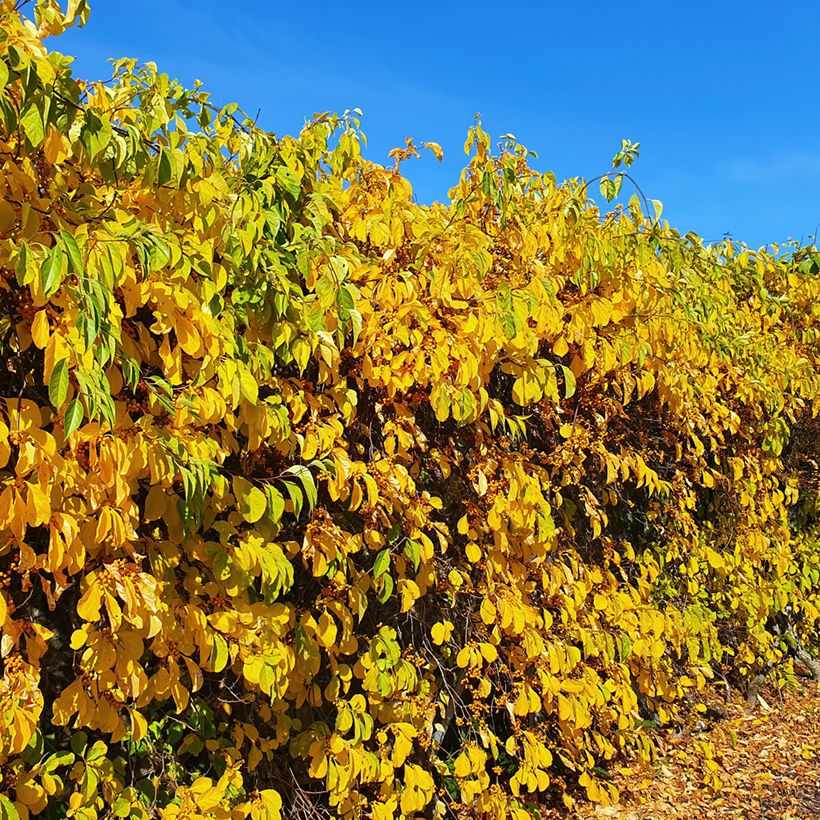

Plant habit
Flowering
Foliage
Botanical data
Celastrus
orbiculatus
Hercules
Celastraceae
Oriental Bittersweet, Staff Vine
China
Other Celastrus - Bourreau des arbres
Planting and care
Celatrus orbiculatus Hercules adapts well to both sunny spots and light shade. It tolerates limestone as long as the soil is enriched with a bit of humus or compost at planting. This plant requires soil that remains slightly moist even in summer, it does not tolerate drought. Mulch if necessary to maintain some moisture. Pruning Celastrus is only useful to contain it. To avoid hindering flowering and fruiting, prune it at the end of winter.
Planting period
Intended location
Care
This item has not been reviewed yet - be the first to leave a review about it.
Summer flowering climbers
Haven't found what you were looking for?
Hardiness is the lowest winter temperature a plant can endure without suffering serious damage or even dying. However, hardiness is affected by location (a sheltered area, such as a patio), protection (winter cover) and soil type (hardiness is improved by well-drained soil).

Photo Sharing Terms & Conditions
In order to encourage gardeners to interact and share their experiences, Promesse de fleurs offers various media enabling content to be uploaded onto its Site - in particular via the ‘Photo sharing’ module.
The User agrees to refrain from:
- Posting any content that is illegal, prejudicial, insulting, racist, inciteful to hatred, revisionist, contrary to public decency, that infringes on privacy or on the privacy rights of third parties, in particular the publicity rights of persons and goods, intellectual property rights, or the right to privacy.
- Submitting content on behalf of a third party;
- Impersonate the identity of a third party and/or publish any personal information about a third party;
In general, the User undertakes to refrain from any unethical behaviour.
All Content (in particular text, comments, files, images, photos, videos, creative works, etc.), which may be subject to property or intellectual property rights, image or other private rights, shall remain the property of the User, subject to the limited rights granted by the terms of the licence granted by Promesse de fleurs as stated below. Users are at liberty to publish or not to publish such Content on the Site, notably via the ‘Photo Sharing’ facility, and accept that this Content shall be made public and freely accessible, notably on the Internet.
Users further acknowledge, undertake to have ,and guarantee that they hold all necessary rights and permissions to publish such material on the Site, in particular with regard to the legislation in force pertaining to any privacy, property, intellectual property, image, or contractual rights, or rights of any other nature. By publishing such Content on the Site, Users acknowledge accepting full liability as publishers of the Content within the meaning of the law, and grant Promesse de fleurs, free of charge, an inclusive, worldwide licence for the said Content for the entire duration of its publication, including all reproduction, representation, up/downloading, displaying, performing, transmission, and storage rights.
Users also grant permission for their name to be linked to the Content and accept that this link may not always be made available.
By engaging in posting material, Users consent to their Content becoming automatically accessible on the Internet, in particular on other sites and/or blogs and/or web pages of the Promesse de fleurs site, including in particular social pages and the Promesse de fleurs catalogue.
Users may secure the removal of entrusted content free of charge by issuing a simple request via our contact form.
The flowering period indicated on our website applies to countries and regions located in USDA zone 8 (France, the United Kingdom, Ireland, the Netherlands, etc.)
It will vary according to where you live:
- In zones 9 to 10 (Italy, Spain, Greece, etc.), flowering will occur about 2 to 4 weeks earlier.
- In zones 6 to 7 (Germany, Poland, Slovenia, and lower mountainous regions), flowering will be delayed by 2 to 3 weeks.
- In zone 5 (Central Europe, Scandinavia), blooming will be delayed by 3 to 5 weeks.
In temperate climates, pruning of spring-flowering shrubs (forsythia, spireas, etc.) should be done just after flowering.
Pruning of summer-flowering shrubs (Indian Lilac, Perovskia, etc.) can be done in winter or spring.
In cold regions as well as with frost-sensitive plants, avoid pruning too early when severe frosts may still occur.
The planting period indicated on our website applies to countries and regions located in USDA zone 8 (France, United Kingdom, Ireland, Netherlands).
It will vary according to where you live:
- In Mediterranean zones (Marseille, Madrid, Milan, etc.), autumn and winter are the best planting periods.
- In continental zones (Strasbourg, Munich, Vienna, etc.), delay planting by 2 to 3 weeks in spring and bring it forward by 2 to 4 weeks in autumn.
- In mountainous regions (the Alps, Pyrenees, Carpathians, etc.), it is best to plant in late spring (May-June) or late summer (August-September).
The harvesting period indicated on our website applies to countries and regions in USDA zone 8 (France, England, Ireland, the Netherlands).
In colder areas (Scandinavia, Poland, Austria...) fruit and vegetable harvests are likely to be delayed by 3-4 weeks.
In warmer areas (Italy, Spain, Greece, etc.), harvesting will probably take place earlier, depending on weather conditions.
The sowing periods indicated on our website apply to countries and regions within USDA Zone 8 (France, UK, Ireland, Netherlands).
In colder areas (Scandinavia, Poland, Austria...), delay any outdoor sowing by 3-4 weeks, or sow under glass.
In warmer climes (Italy, Spain, Greece, etc.), bring outdoor sowing forward by a few weeks.
